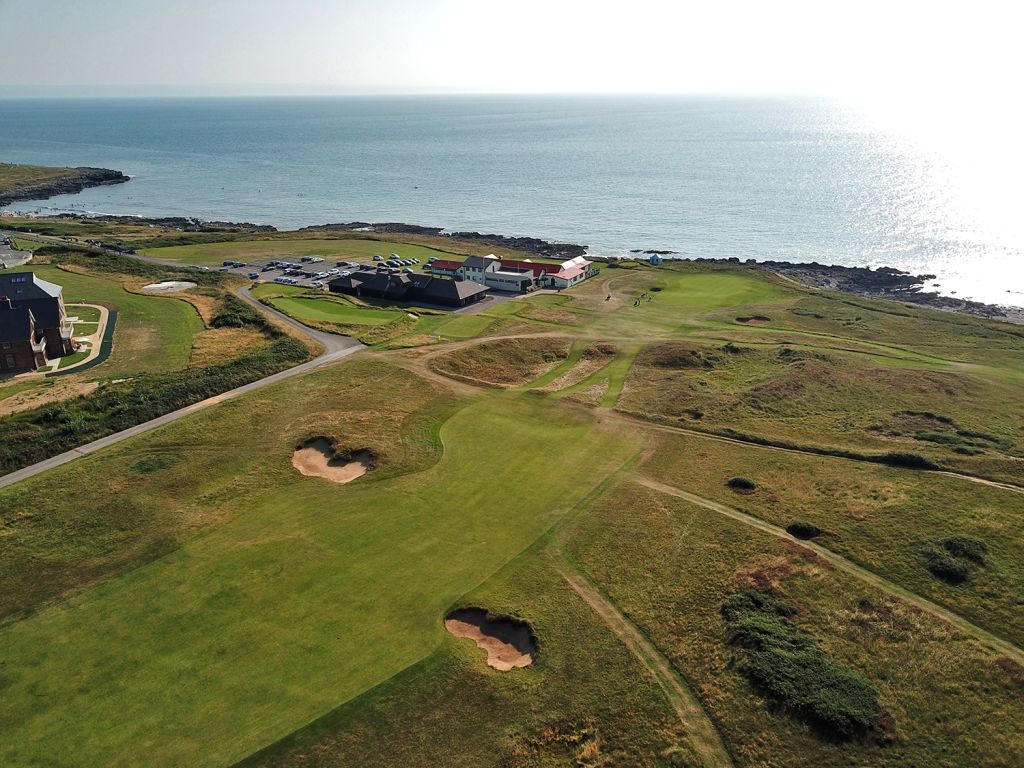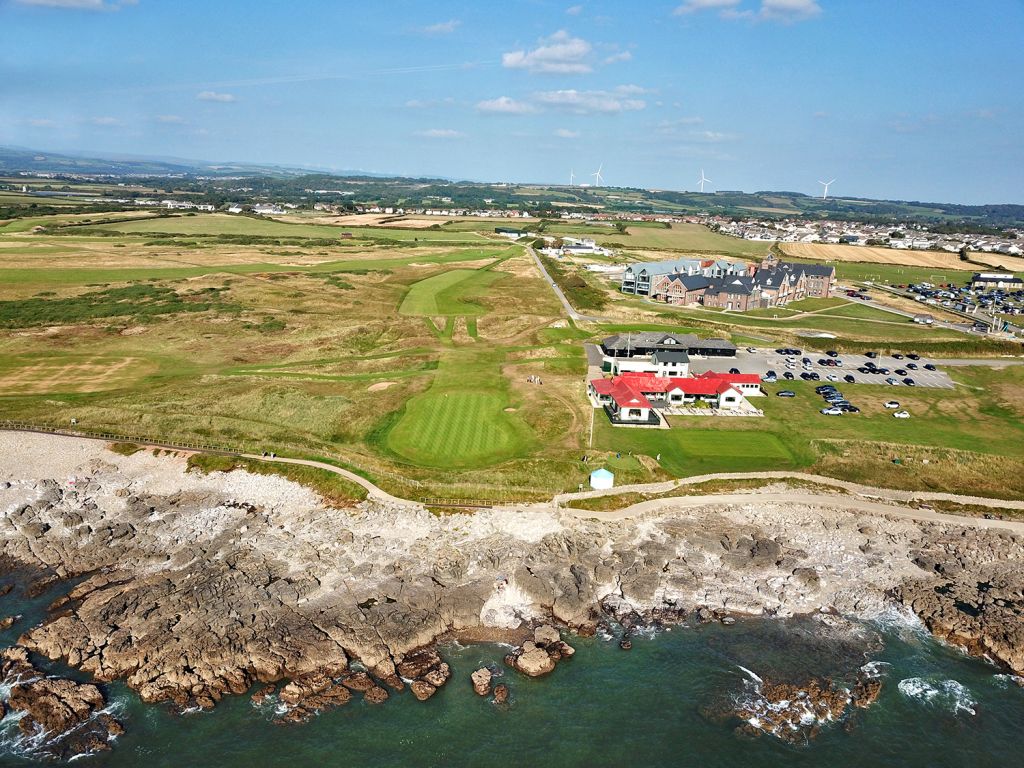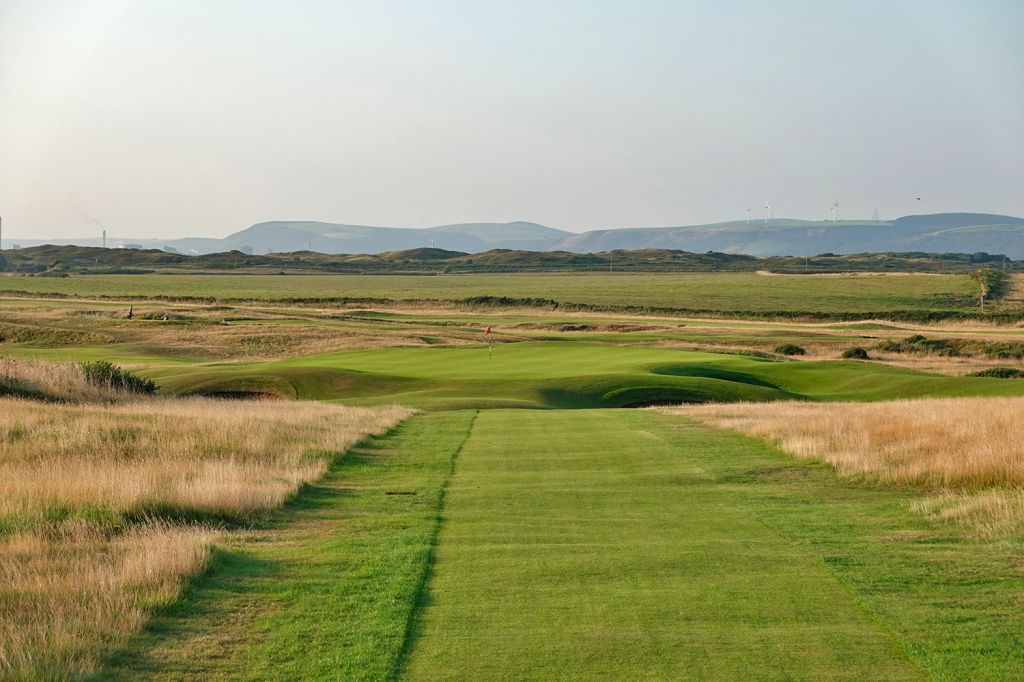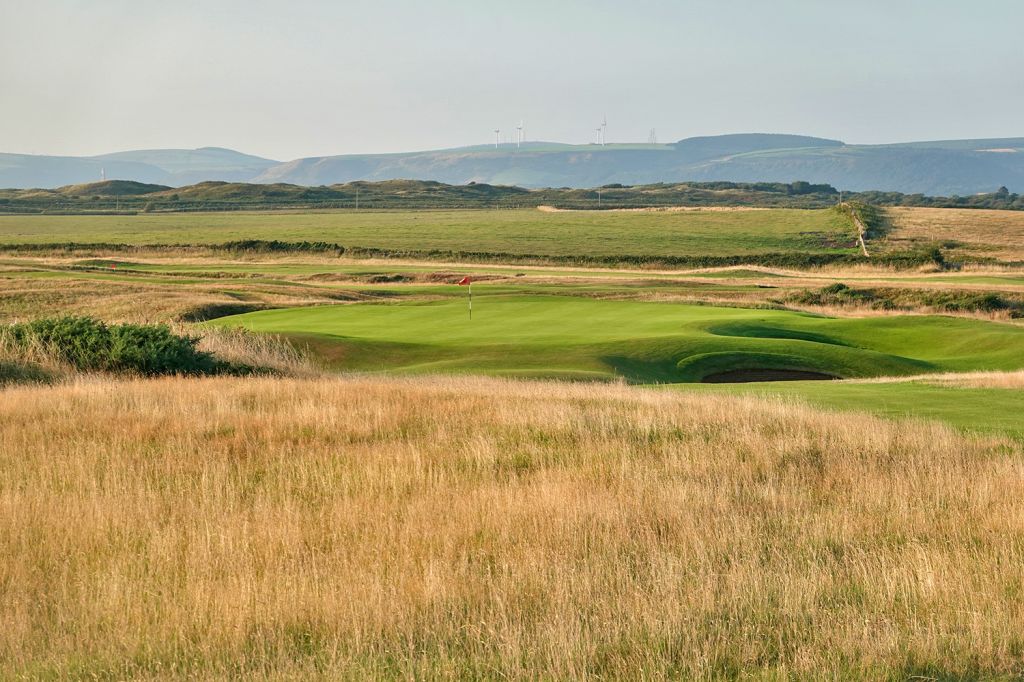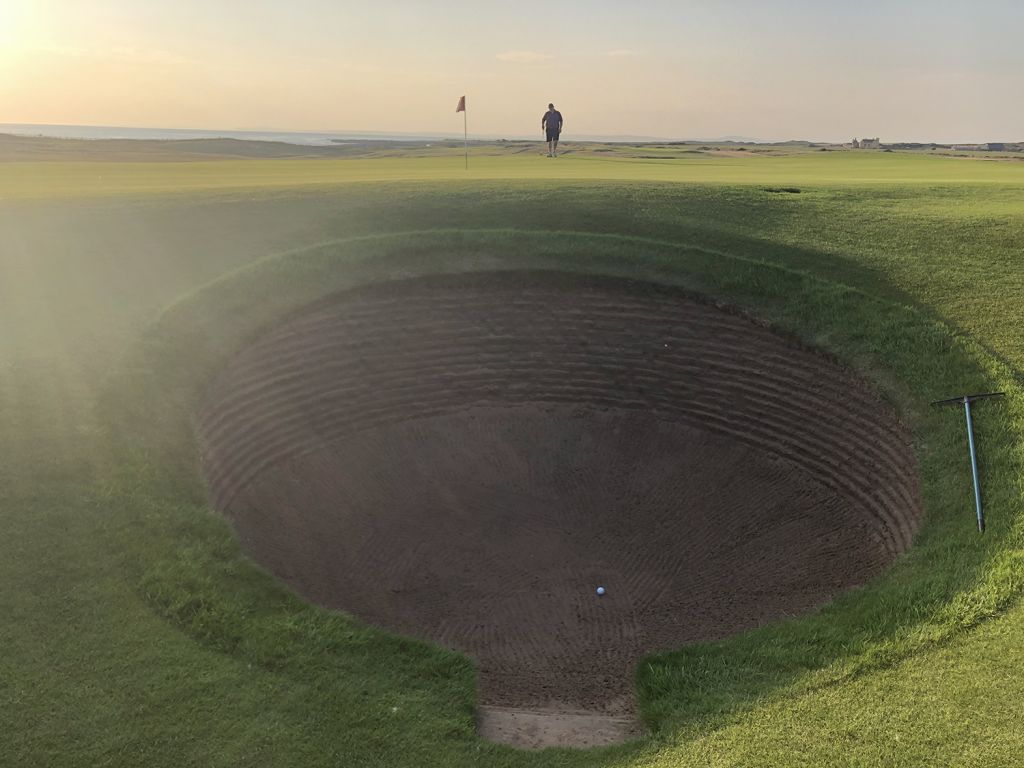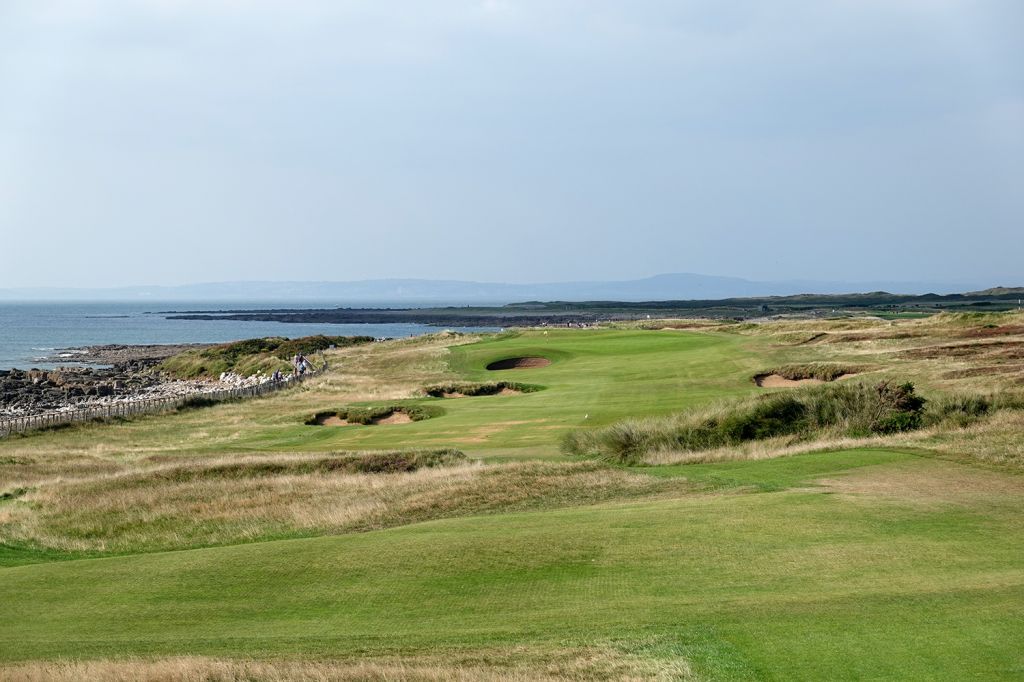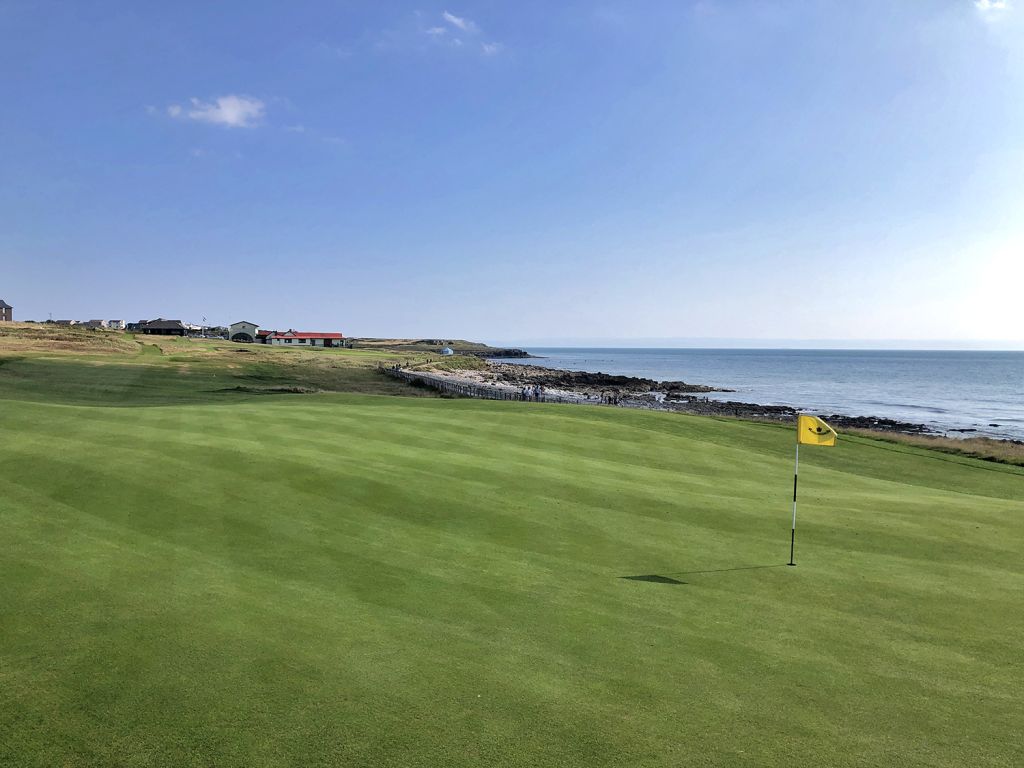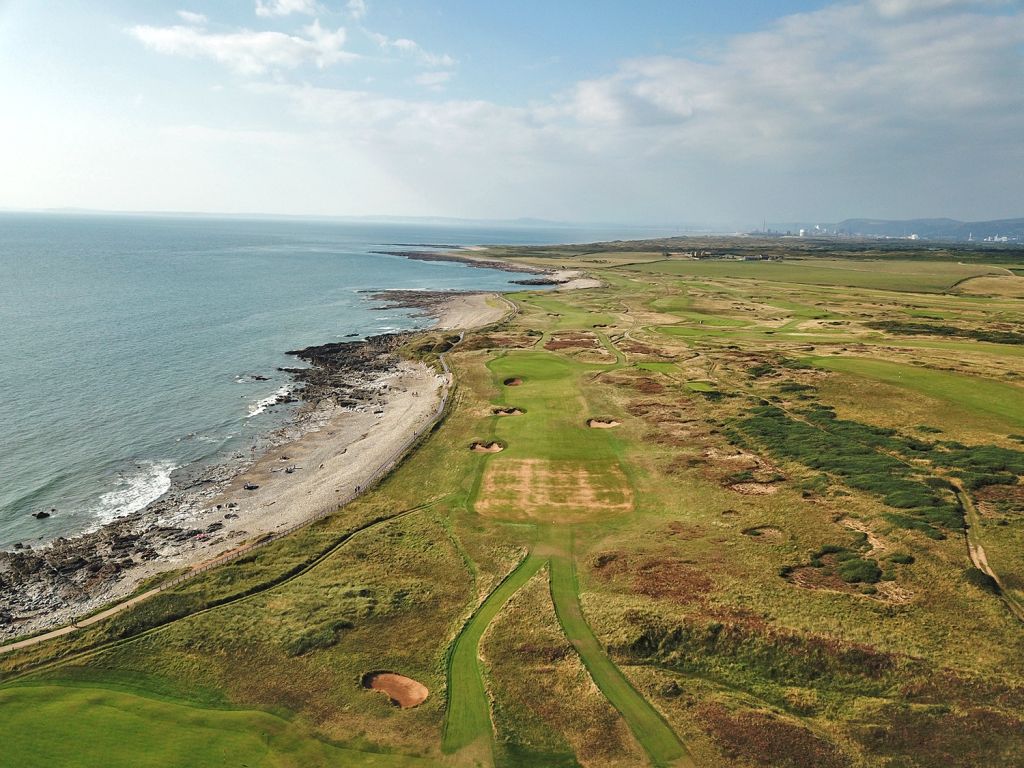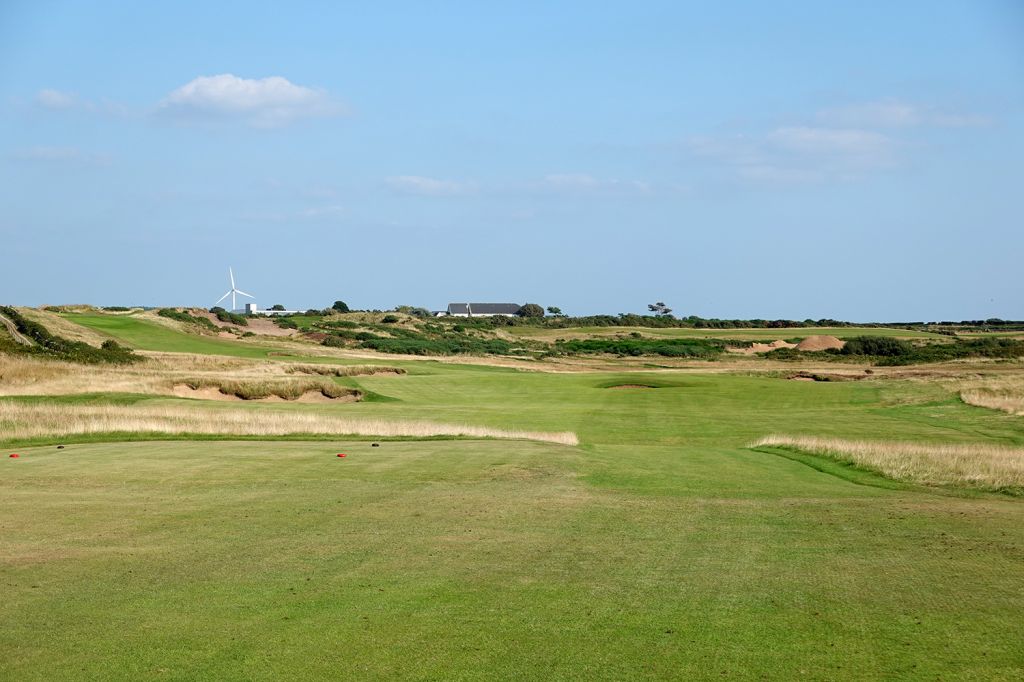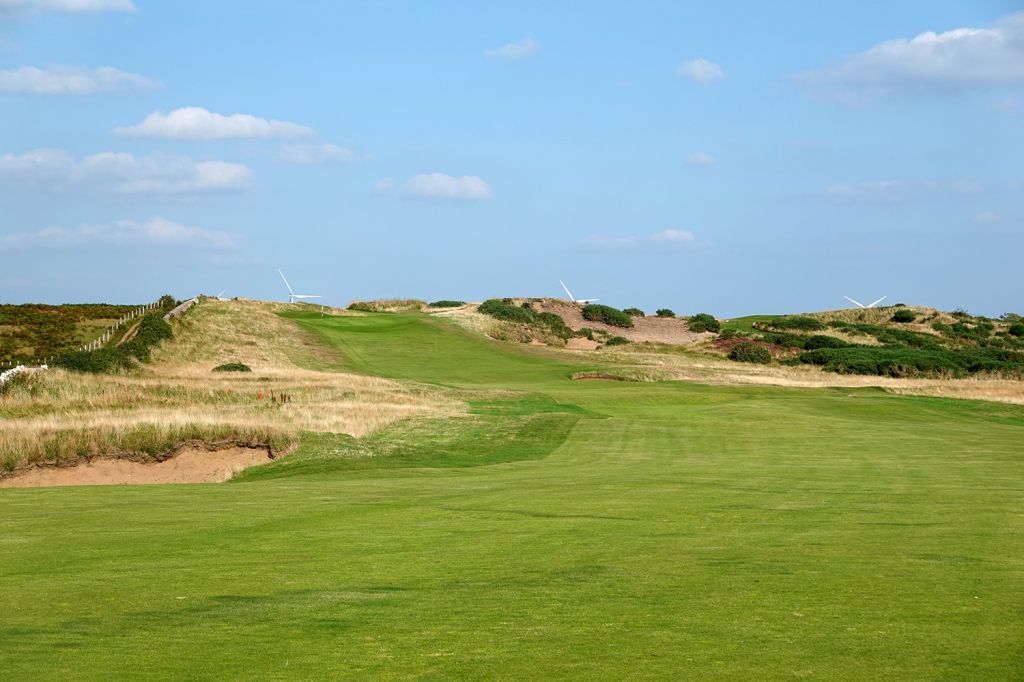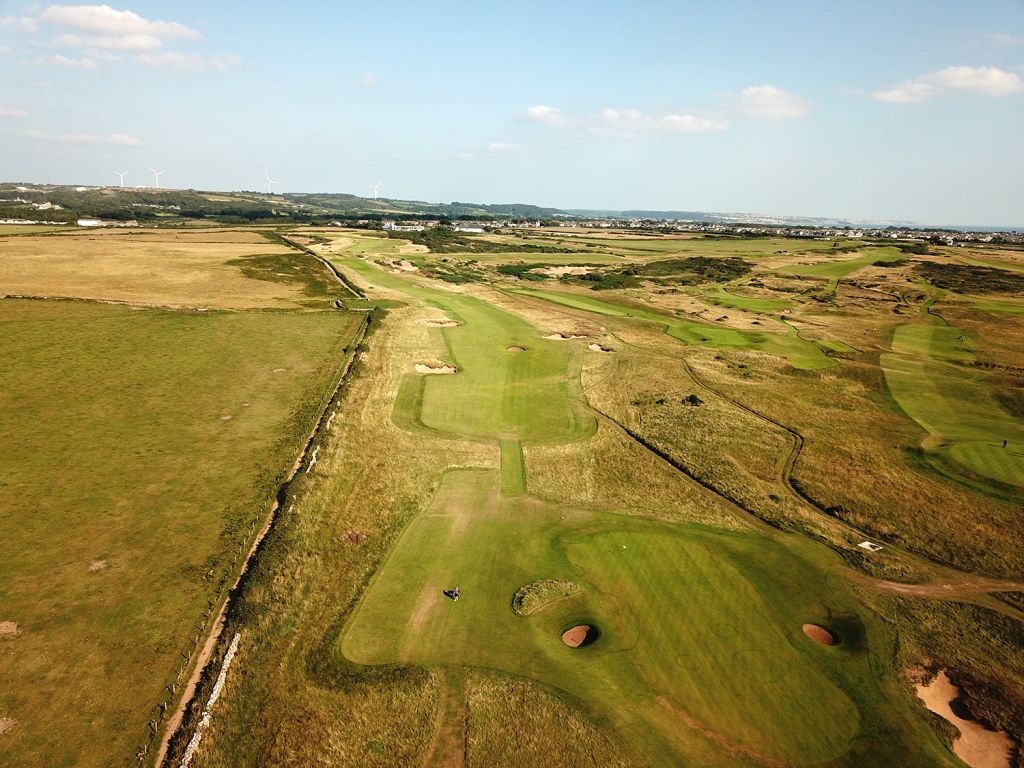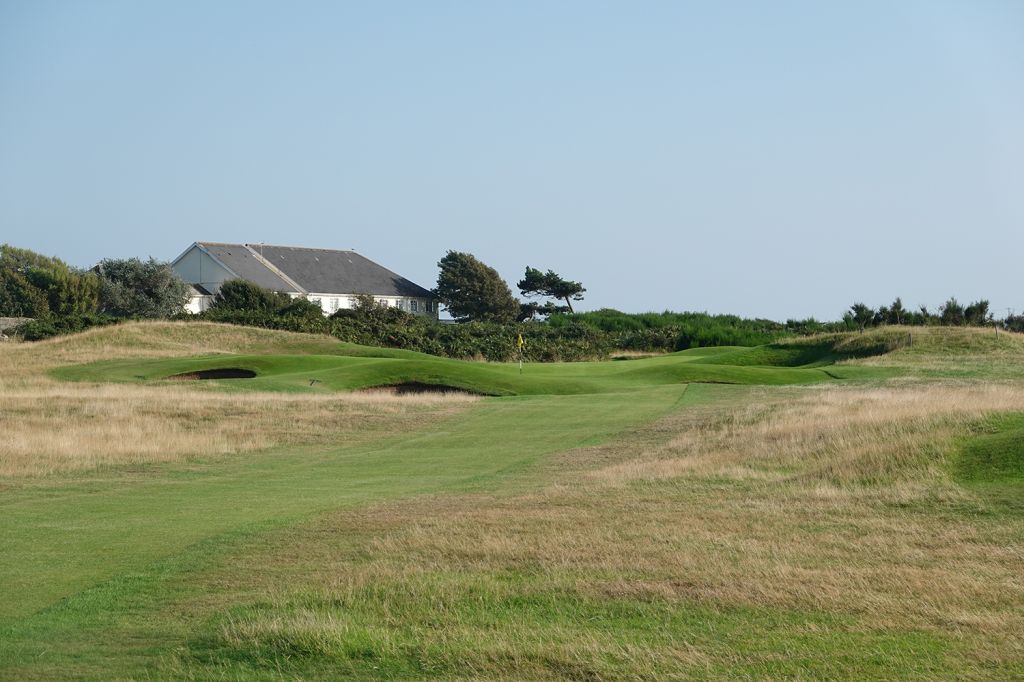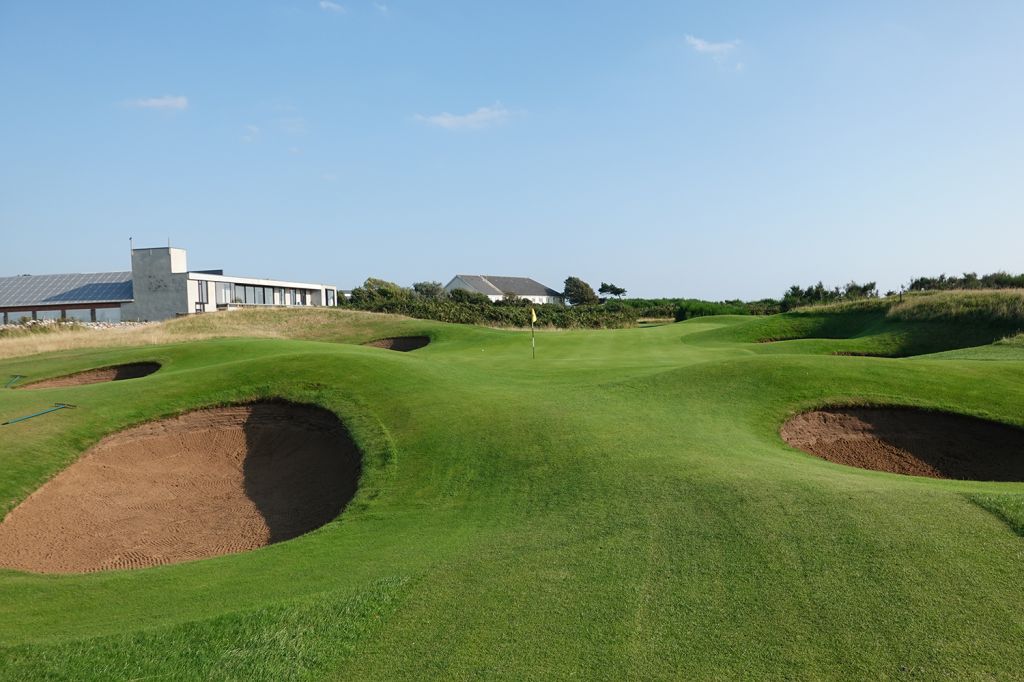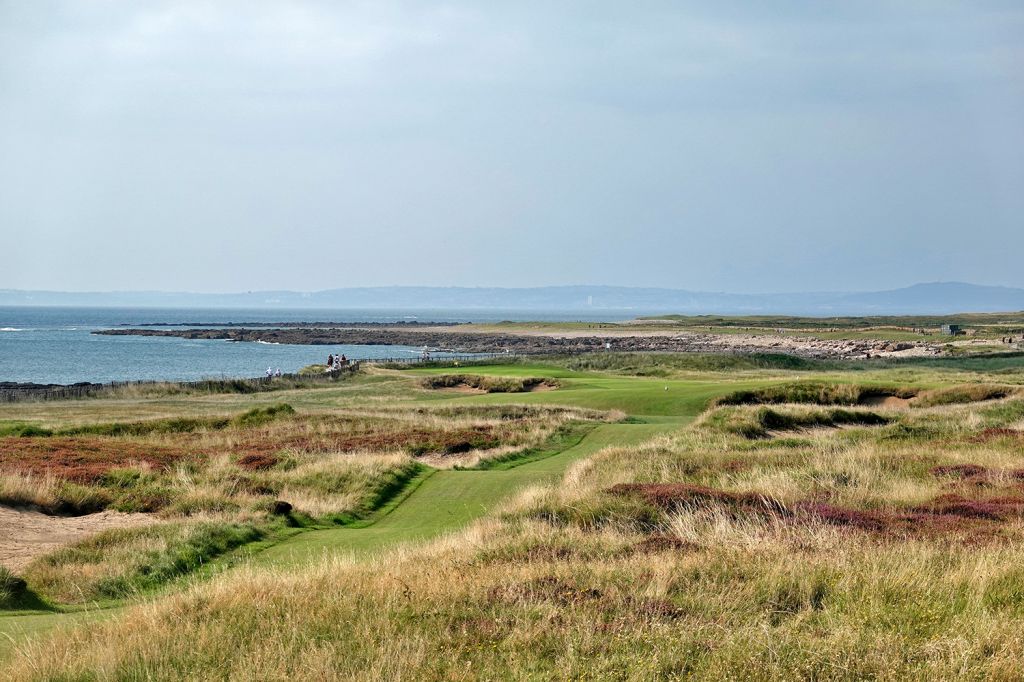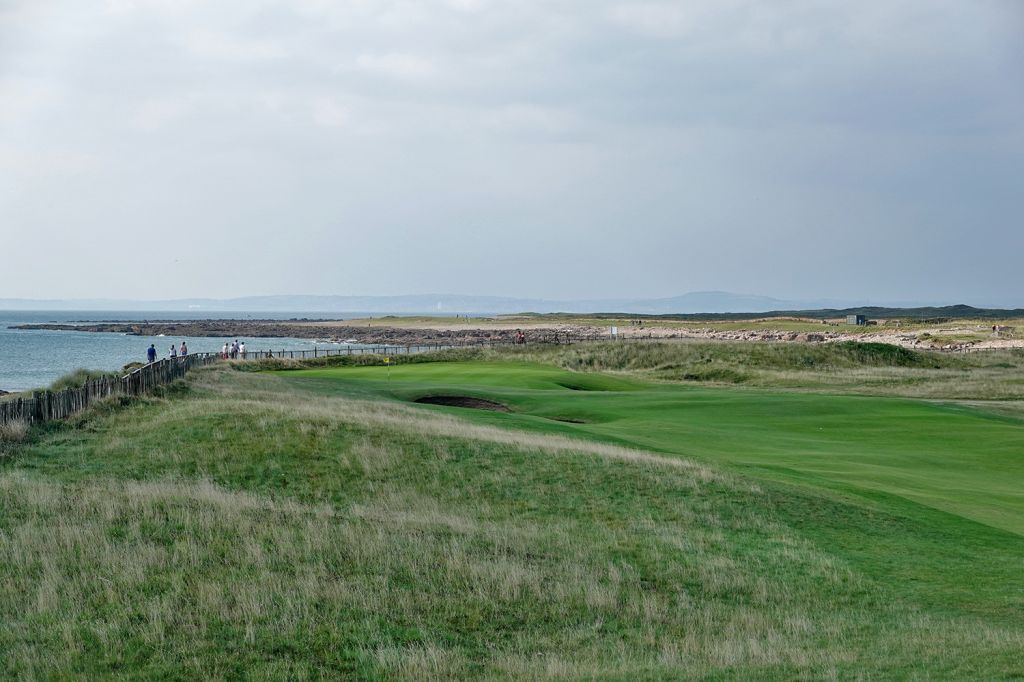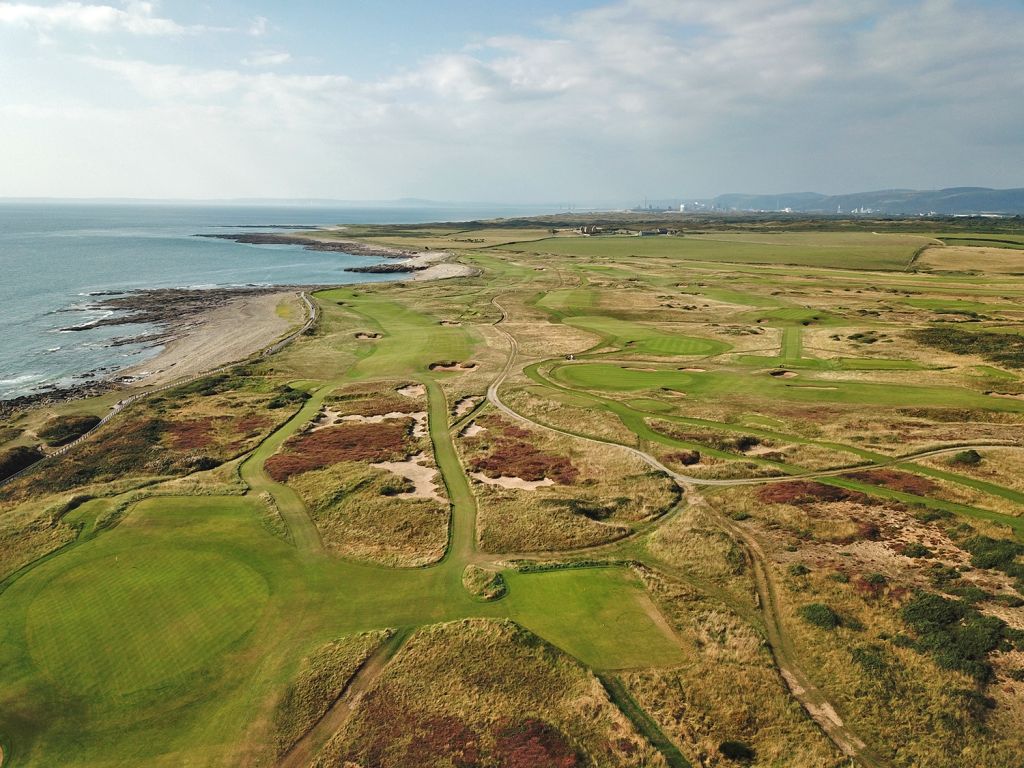 Golf Course Review by: Billy Satterfield
Golf Course Review by: Billy Satterfield
Rankings:
The Takeaway: Absolutely brilliant from start to finish with compelling architecture, engaging terrain, and ocean views all day long. Easily the best course in Wales and one of the finest in the U.K. Don't miss it! Grade A+
Quick Facts
Designer: Ramsay Hunter 1895 (Harry Colt 1913, F.G. Hawtree & J.H. Taylor 1925, Tom Simpson 1933, Martin Ebert current)
Cost: £80 - £200 Click for current rates
Phone Number: +44 1656 782251
Course Website: Official Website - Visit Royal Porthcawl Golf Club's official website by clicking on the link provided.
Directions: Get here! - Rest Bay, Porthcawl , CF36 3UW – WALES
Photos: See additional photos of Royal Porthcawl Golf Club
What to Expect: Unquestionably the best golf course in Wales, Royal Porthcawl wastes no time delivering an impressive visual experience with the three opening holes playing straight down the coastline. But it isn't just the eye candy that makes Porthcawl great, it is the hole designs. Each offering delivers engaging architecture with the routing often changing direction so as to play with different wind directions frequently. The first nine essentially covers the western, northern, and half of the eastern perimeter of the property before going into the central acreage. The final hole is a dramatic downhill par four that plays along the southern boundary of the property and directly to the sea; delivering an appropriate crescendo to the round. The green complexes and bunkering are top notch and everything about the course makes it a worthy consideration to enter the British Open rota. As is common with most courses in the UK, players will be required to walk but can rent a trolley to help tote their clubs around. In the end, Royal Porthcawl is nothing short of special and deserves every accolade it has ever earned; and then some. In fact, I prefer Porthcawl to every course on the British Open rota except Royal Portrush in Northern Ireland.
By the Numbers
| Tees | Par | Yardage | Rating | Slope |
|---|---|---|---|---|
| Black | 72 | 7137 | 76.2 | 141 |
| Blue | 72 | 6948 | 75.3 | 139 |
| White | 72 | 6580 | 73.6 | 136 |
| Yellow | 72 | 6303 | 72.0 | 134 |
| Red | 75 | 5840 | 70.0 | 129 |
| Bronze | 71 | 5464 | 68.1 | 126 |
| Red (Ladies) | 75 | 5840 | 76.0 | 142 |
| Bronze (Ladies) | 73 | 5464 | 73.9 | 138 |
Individual Hole Analysis
Signature Hole: 18th Hole – 459 Yard Par 4 – A dramatic and scenic finishing hole, Royal Porthcawl takes players off the course in class with this lengthy two-shotter that plays directly towards the ocean. The hole descends 50 feet in elevation from the back tee down to the green and if you can catch the speed slot with your drive you'll shorten this hole up real quick, however if your ball finds ones of the two bunkers in the driving zone then you'll watch your chances of reaching the green in regulation get flushed down the toilet quick. The pot bunker sits on the inside bend of the kidney shaped green and presents a spot you want nothing to do with as the multi-tiered green makes getting close to the pin a challenge. It really is a beautiful finishing hole that is more receptive than it looks on the card.
Best Par 3: 14th Hole – 173 Yards – The final one-shotter at Royal Porthcawl is this attractive offering with miles of Welch countryside in the distance. The edges of the green slope away to trouble with the three bunkers being deep enough to bury a dead body in. The putting surface is receptive so feel free to be aggressive to the pin positions everywhere except the back right corner. Ultimately, doing everything you can to stay out of the bunkers is the most important thing to consider as many players will take more than one stroke getting out.
Best Par 4: 1st Hole – 374 Yards – The opening hole sets the tone early at Royal Porthcawl with a beauty of a par four. Tipping out under 400 yards, the course offers a gentle handshake but there are still a quartet of bunkers to contend with as well as the sea rolling in the full length of the left side. The first three holes at Porthcawl run northwesterly along the coastline with popular beach spots to throw out a towel. The green slopes from front to back, so if you are between yardages on your approach take the shorter club and be aggressive.
Best Par 5: 5th Hole – 611 Yards – A true three-shotter, the 600+ yard 5th hole is a brute to tackle. A center bunker in the fairway stares back at players just begging them to thread the needle on either side of it, when really the most prudent play is hitting right at it with a club that will stay just short of it. The ascension to the green is stiff as the fairway climbs 30 feet in the last 100 yards and features a fairway bunker 75 yards from the middle of the putting surface and encourages players to layup short of it. The approach shot to the raised green is an exciting one but you better take enough club to reach it as balls can quickly tumble back down the fairway if they come up wanting. This is a hole that can be a grind for players that aren't able to keep focus, so take this hole one shot at a time and get your par on the card.
Birdie Time: 7th Hole – 122 Yard Par 3 – Easily the shortest hole on the course, the 7th puts a scoring club in the player's hands and gives them an opportunity to go pinseeking. Six bunkers crest around the putting surface covering everywhere but the back of the oblong and undulated green. Porthcawl wasn't going to give you too easy of a time covering 122 yards, but still, it is such a short hole there is no reason to not be aggressive attacking any pin position. So go card a birdie here at the furthest point from the clubhouse and gain some momentum as the front nine nears a close.
Bogey Beware: 2nd Hole – 451 Yard Par 4 – After a gentle opener, Porthcawl counters with a tough par four that runs right along the coastline with the greatest exposure to the wind and elements. There is a bunker at the end of the walking path on the right side that marks a good line to hit your drive over, or slightly to the left of it, for an ideal angle into the green. The fairway slopes from right to left and balls that get tugged too far that direction will have a pair of bunkers short and left of the green they'll have to fly enroute to the putting surface. The undulations in front of the green push balls towards the bunkers so it is best to fly your approach all the way to the front of the green to avoid a sandy existence.




